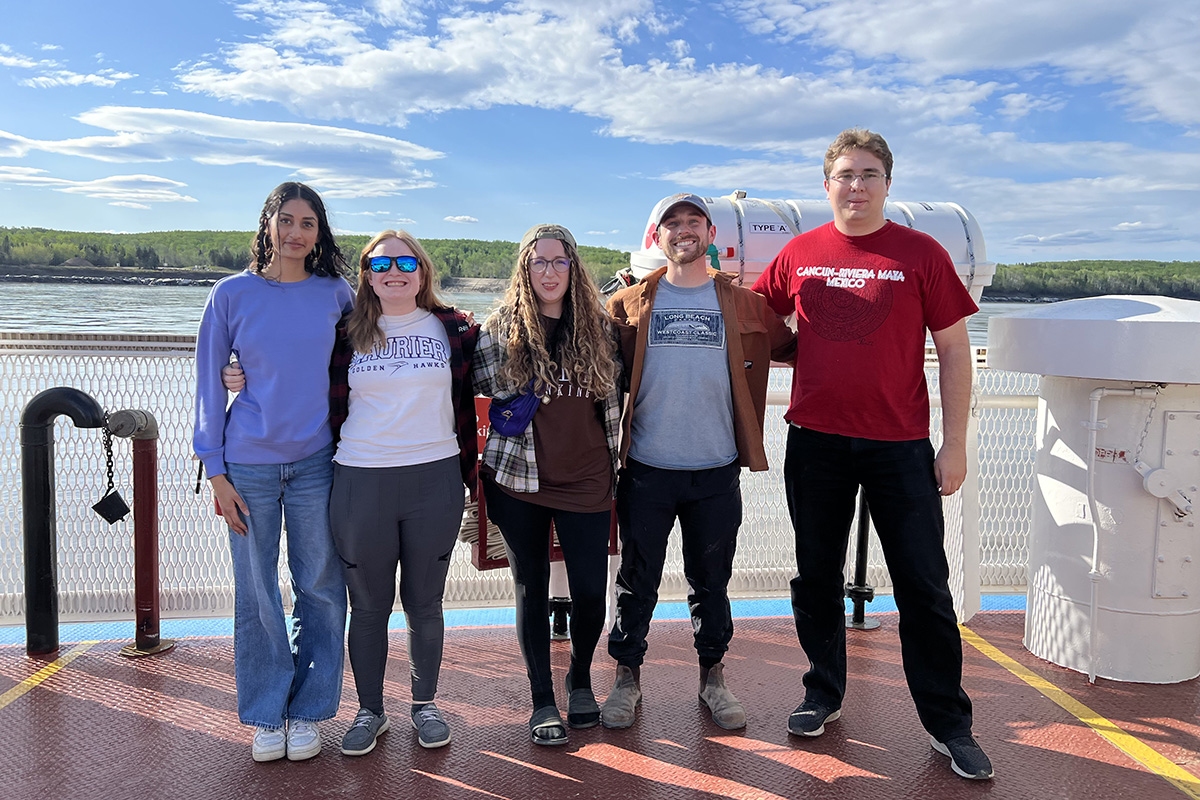Future-Ready Northern Research
Laurier students helping northern communities adapt to climate change
Search for academic programs, residence, tours and events and more.
Laurier students helping northern communities adapt to climate change
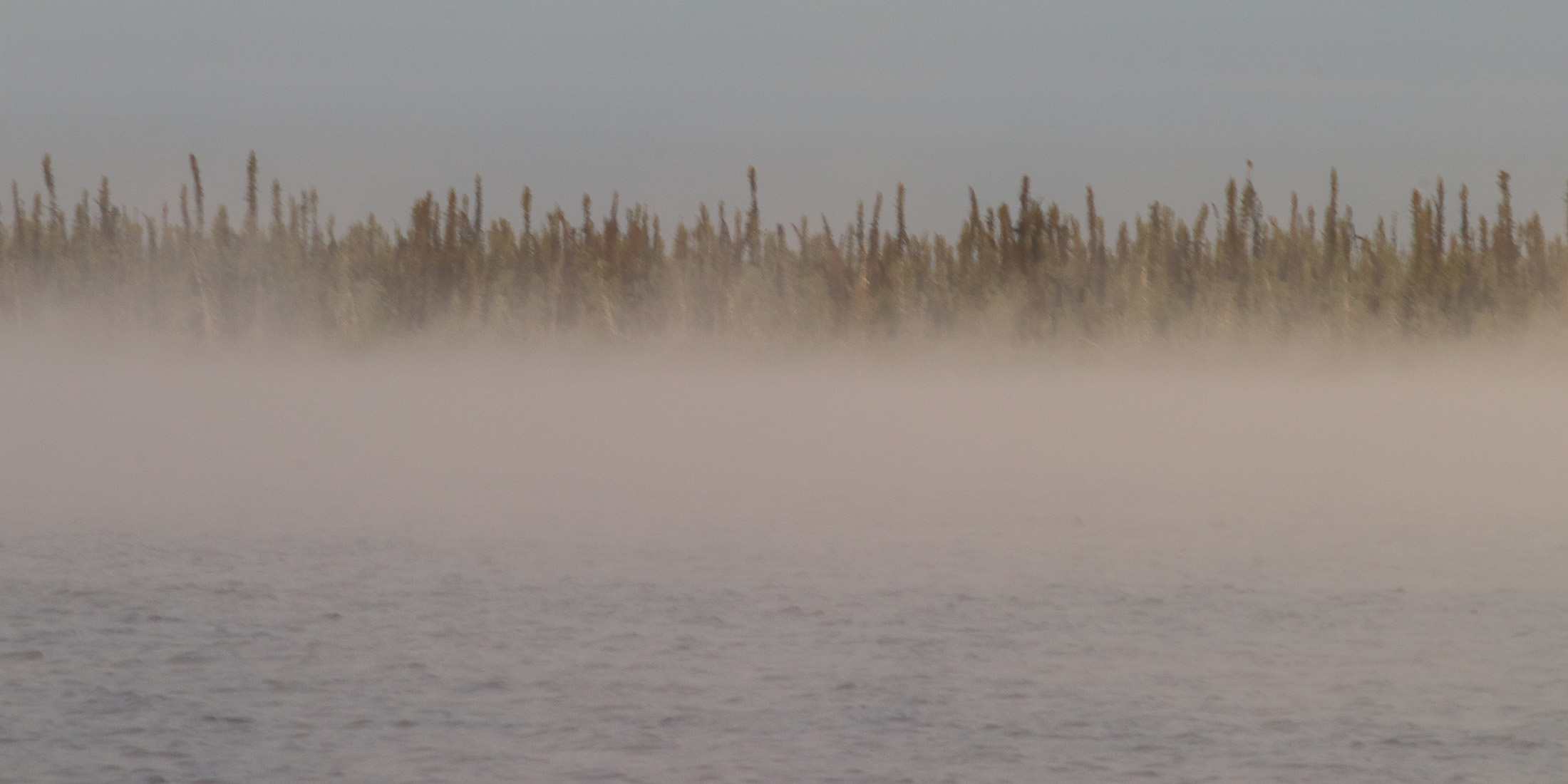
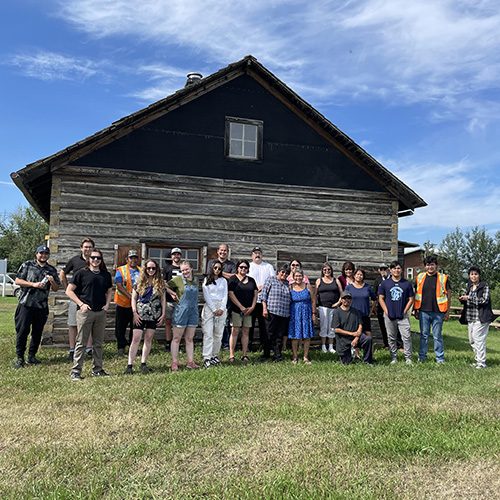
Jan. 29, 2024
During the summer of 2023, six Wilfrid Laurier University student researchers travelled to the Northwest Territories (NWT) to study an urgent environmental issue: permafrost thaw. Permafrost – which is frozen ground – protects polar ecosystems and traps harmful carbon emissions. As Arctic temperatures rapidly increase, the rate of permafrost thaw is greater than its rate of formation, causing a myriad of issues including deforestation and biodiversity loss.
“Our traditional way of life is changing,” says Shannon Cazon, monitoring coordinator at Łı́ı́dlı̨ı̨ Kų́ę́ First Nation (LKFN). “Finding new ways to adapt has been the biggest concern for our community members.”
Cazon and her colleagues work with Laurier researchers as part of the Dehcho Collaborative on Permafrost (DCoP), a regional effort that combines scientific and Indigenous knowledge. LFKN welcomed four Laurier undergraduate and graduate students to their community to help monitor, understand and predict the local effects of permafrost thaw. Two additional Laurier students spent the summer in Yellowknife working within departments of the Government of the Northwest Territories, a key partner in DCoP.
“Their individual research projects gathered valuable information about the sensitive changes impacting the Dehcho region,” says Cazon. “This continued relationship between communities and researchers is important to understand the changes to our land.”
Below, four Laurier students share what they learned during their hands-on experiences in northern communities.
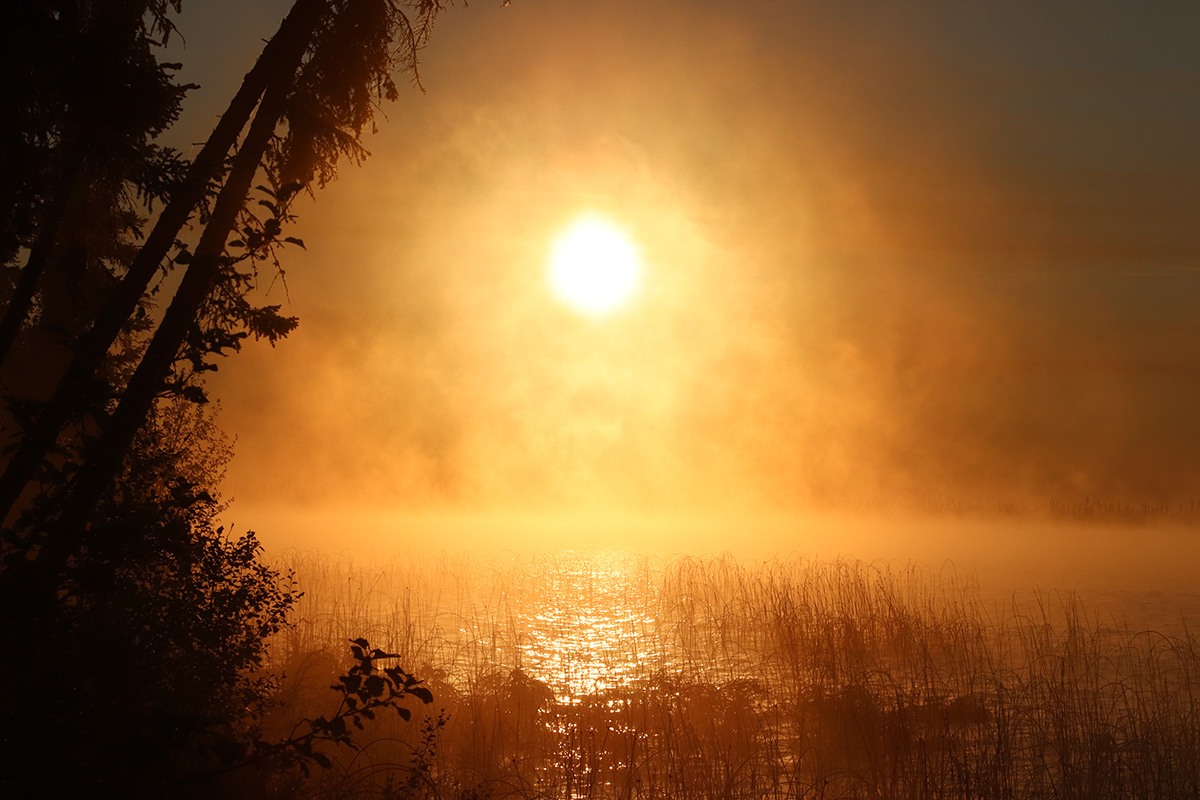
Amber Buston-White is a graduate student pursuing her master’s degree in Environmental Studies. She is a research assistant and mentor at the Scotty Creek Research Station who specializes in the effects of permafrost thaw on water storage and infrastructure in the NWT.
Our research group looks at how permafrost thaw shapes the NWT’s landscape. Specifically, my master’s research looks at how the storage of water has changed due to permafrost thaw.
We use satellite imagery from NASA to help see the wetlands where water would normally be stored. These wetlands are now draining, which introduces new species, causes wildlife migration and changes biodiversity. Indigenous peoples cannot rely on traditional hunting patterns. Wetlands also used to serve as natural fire breaks to stop forest fires, as the ground is too moist for fire to move across. Now that the land is drying, fires only spread faster.
Ever since I was a kid, I’ve always wanted to be a meteorologist, so this is something that I love doing. I love mentoring other students because I love shaping people’s minds. I want to be a professor one day. I also love forming and continuing long-lasting relationships with northern communities and being able to collaborate with them. It is profound to go into communities and help address questions that people want answers to.
Well, I am looking for a new field assistant if anyone is interested! I think that it’s good to form connections with your professors and the community early on and see if they have any opportunities to get involved in research. You don’t even need to be on-site right away. You can start with remote sensing or helping with data archives before you decide to fully commit to a project.
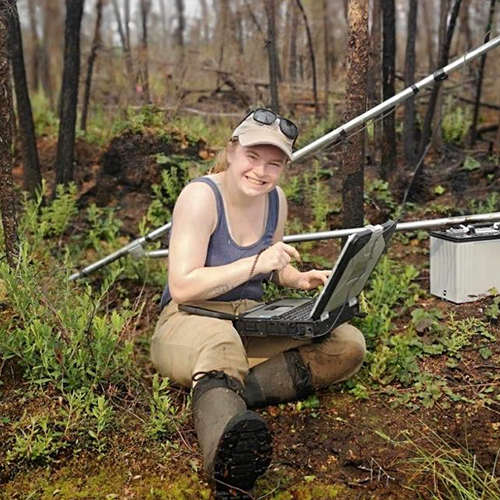
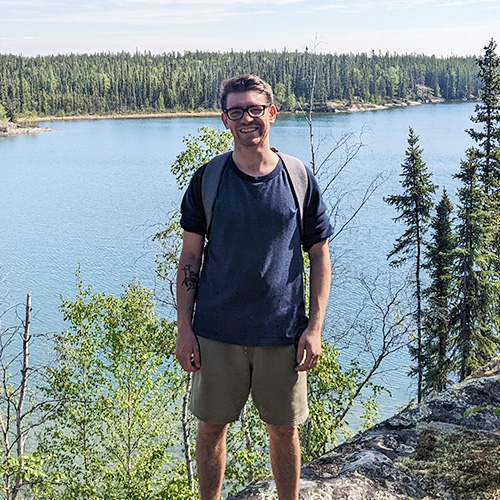
William Bender is an undergraduate student pursuing his bachelor’s degree in Environmental Studies. He worked as a mapper and remote sensor at the NWT Geological Survey office, where he studied thermokarst, the changing of the landscape due to permafrost thaw.
As a remote mapper, I use a program called ArcGIS Pro to create an inventory of any thermokarst formations that concern us based on imagery from the satellite Sentinel, run by the European Space Agency. Permafrost thaw causes a bunch of different problems for communities and infrastructure, so we need to have a better understanding of where these landscape changes are.
I think we tend to think of climate change as all doom and gloom, so it is nice to know people are actively working on solutions. I felt more hopeful than I was expecting. I see lots of collaboration between Indigenous groups, government bodies and research institutes, which is a good push in the right direction.
Get to know your professors! Ask about their research and why they’re interested in it. It can be a little intimidating in the beginning, but I think students should remember that professors are just people too.
If you’re unsure about whether you want to pursue Environmental Studies, ES110 is a great introductory course to take. I think the best way to engage with the research is to go up north if you can. It is such a beautiful place and it really helps to talk to people there and see that the North is being impacted by climate change at higher rates than the south.
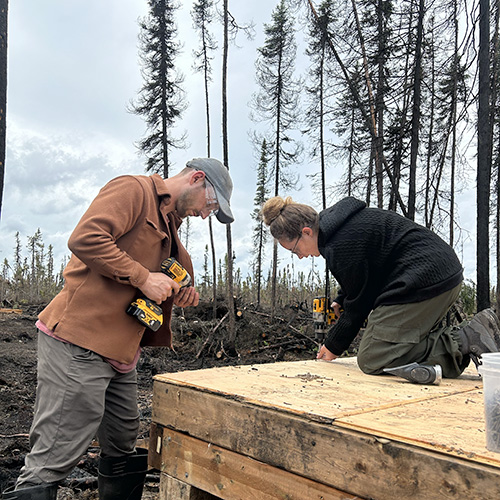
“It’s fulfilling to work with like-minded researchers and collaborate with Indigenous communities to blend western science with traditional knowledge. ”
Taylor Hayhurst, undergraduate researcher
Simaran Kaur is an undergraduate student pursuing her bachelor’s degree in Environmental Science. She is currently a research assistant at the Scotty Creek Research Station studying wildfires in the North.
My undergraduate thesis focuses on how wildfires increase permafrost thaw and how they might cause a feedback loop. I definitely see a direct correlation between the two so far. My main task was making a burn severity map, which looked at what areas of the land were burned, how badly the land was burned and what didn’t burn.
I’ve always feared climate change and have wondered if there’s anything we can do about it. This research gave me some insight into small steps that can be taken to help the environment. We have monthly meetings with students and community members who work at the Scotty Creek Research Station where we chime in, listen to research findings, ask questions and discuss what should be done to solve issues.
I had the opportunity to present my thesis at our last meeting. Someone approached me with a concern about permafrost thawing close to an underground railroad pipeline, which could potentially have burst the pipeline. We were able to locate the permafrost using a probe that sent underground signals into the land. It makes me happy to know that my project might help figure out what issues could be solved in the community.
I would say to ask your professors about opportunities they might have. I took a geography course with Professor Bill Quinton and he told us that he was looking for undergrad students to help him with his research. Don’t be afraid to ask or feel like you might be judged! Everyone here is learning and is willing to help you out.
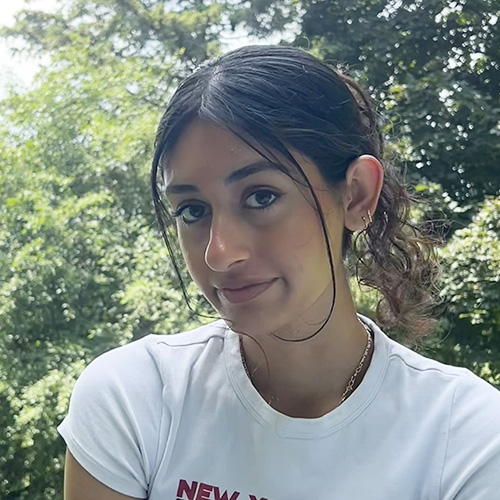
Simaran Kaur
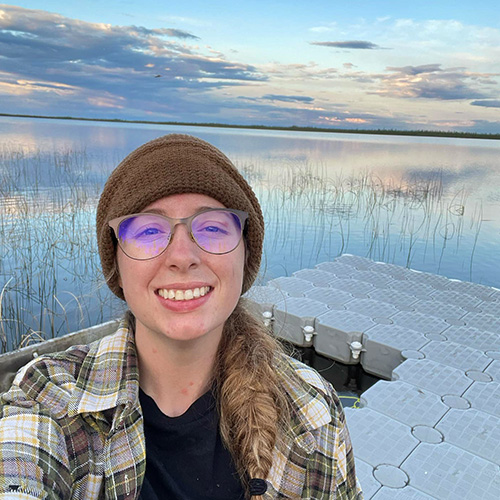
Taylor Hayhurst is an undergraduate student pursuing her bachelor’s degree in Geography and Geomatics. She is a research assistant at the Scotty Creek Research Station examining wildfires in the North.
I completed a wildfire trends analysis, which looked at the locations and sizes of wildfires between 1965 and 2021, as well as which ecoregions are being impacted by wildfires and their connection to permafrost thaw. We created ArcGIS Storymaps to better represent and publicize what we were working on. This is an interactive and accessible platform for any interested parties to view our findings. As these are prevalent issues surrounding Fort Simpson, it’s especially important that community members can keep up with the research being conducted on their land and have a better understanding of the natural processes and trends that continue to alter the landscape around them.
Being from southern Ontario, the significant changes happening in northern and northwestern locations are very out of sight and out of mind for the average person. Unless it’s a devastating wildfire, flood or landslide, the long-term changes above and beneath the landscape aren’t going to make headlines. It’s fulfilling to work with like-minded researchers and Indigenous communities to blend western science with traditional knowledge. We are working together to answer important questions about the changing landscape.
The first steps are to figure out your interests and discuss potential opportunities with any professors whose work relates to what you’re interested in. Whether they have ongoing opportunities themselves or perhaps know of someone looking for undergraduate students, it’s a great way to put your name out there.
